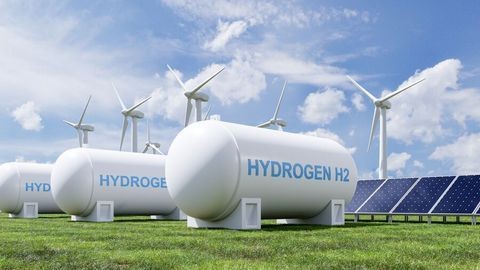Biden Administration Moves Closer to Establishing Framework for Giving Preference to Bids and Contractors with Lower GHG Emissions
Client Alert | 4 min read | 10.03.23
On September 21, 2023, the White House directed federal agencies to incorporate interim Social Cost of Greenhouse Gases (SC-GHG) estimates into a wide range of federal agency actions, including each agency’s procurement function. This most recent direction builds upon the Administration’s ongoing and wide-reaching effort (examples discussed here and here) to leverage federal procurement spending in pursuit of climate change and sustainability policy objectives. The hallmark of that effort to date had been a proposed rule that would, if finalized, require thousands of federal contractors to inventory, publicly disclose, and, in some cases, seek reductions in GHG emissions (see our prior discussion here). However, the White House’s incorporation of SC-GHG into the federal procurement process has the potential to be just as significant to the contracting community by providing a cost metric (in dollars) needed for contracting agencies to evaluate and confer a preference on bids and contractors with lower GHG emission profiles.
The recent direction implements Section 5 of Executive Order 13990, which charged a reconstituted Interagency Working Group on the Social Cost of Greenhouse Gases (“IWG”) with identifying “budgeting, purchasing, and other key decisions” that should incorporate SC-GHG considerations. As explained in E.O. 13990, the SC-GHG is an estimate "of the monetized damages associated with incremental increases in greenhouse gas emissions. . .” 86 Fed. Reg. 7037, 7040 (Jan. 20, 2021). Currently set at $51 per ton of carbon dioxide emissions (in 2020 dollars and applying a 3% “discount rate” to estimate future damages), the metric for each component emission of SC-GHG (i.e., carbon dioxide, methane, and nitrous oxide) is expected to increase significantly as a result of updates being prepared by the IWG also in compliance with directives set forth in E.O. 13990.
While political debate continues about the underlying manner in which the SC-GHG is calculated and the range of appropriate applications of the resulting estimates, the new direction from the White House to incorporate the SC-GHG metric into federal procurement processes now sets the stage for the Federal Acquisition Regulatory Council (FAR Council) to complete its development of proposed amendments to the Federal Acquisition Regulation (FAR) intended to “minimize” the risk of climate change impacts from “major” federal procurements. Those regulations are being developed through pending FAR case 2021-016, in furtherance of aspects of Executive Order 14030 (May 25, 2021), addressing Climate-Related Financial Risk. As the FAR Council explained in its October 2021 Advance Notice of Proposed Rulemaking (discussed previously here), E.O. 14030 directs the FAR Council "to consider amending the FAR to ensure that major Federal agency procurements minimize the risk of climate change, including requiring the social cost of greenhouse gas emissions to be considered in procurement decisions and, where appropriate and feasible, giving preference to bids and proposals from suppliers with a lower social cost of greenhouse gas emissions." 86 Fed. Reg. 57405, 57405 (Oct. 15, 2021) (emphasis added). According to publicly available updates, a proposed rule has been drafted by staff and is being reviewed by the Civilian Agency Acquisition Council concurrently with the Office of Information and Regulatory Affairs and the Office of Federal Procurement Policy within OMB.
The ultimate impact of the forthcoming proposed rule will be determined by how it seeks to address several potential questions, including:
-
- Will all procurements be required to include consideration of SC-GHG or, alternatively, only "major" procurements? And if only “major” procurements, how will that term be defined (g., the proposed GHG disclosure rule defines “major” contractors to be those receiving in excess of $50 million in federal awards annually)?
- For the calculation of SC-GHG, we understand that baseline GHG emissions must first be measured and then the SC-GHG will be used to calculate the benefits on the federal programs. Will a contractor be able to dispute the baseline GHG assessment and corresponding SC-GHG calculation? And, if so, how will such a dispute be handled?
- Will a contractor’s SC-GHG be an evaluation factor in a contractor’s procurement proposal? If so, will the source selection committee of a particular procurement have the experience and expertise necessary to make such an evaluation? And, once calculated, how will the SC-GHG assigned to a particular bid and/or contractor be considered and/or weighted within the context of price and other evaluation criteria?
- How will the scope of the SC-GHG be defined for each procurement? Will agencies be required to quantify and assign dollar figures to the GHG emissions of a contractor’s operations generally, or just the GHG emissions deemed to be associated with a particular product or service that is the subject of an acquisition? Similarly, how will the GHG emissions associated with a contractor’s supply chain be considered, and who will be responsible for developing and submitting that data? Will a prime contractor be responsible for verifying or certifying the accuracy of a subcontractor’s GHG emissions profile?
- To what extent will the SC-GHG provisions draw upon or otherwise interact with GHG disclosure data expected to be generated through the draft proposed disclosure rule?
The fate of FAR case 2021-016 and the final contours of the pending FAR GHG disclosure rule appear poised to fundamentally alter aspects of the procurement landscape for many federal contractors. The Crowell team stands ready to assist in evaluating the implications of these rules as they continue to progress.
Contacts
Insights
Client Alert | 2 min read | 12.19.25
GAO Cautions Agencies—Over-Redact at Your Own Peril
Bid protest practitioners in recent years have witnessed agencies’ increasing efforts to limit the production of documents and information in response to Government Accountability Office (GAO) bid protests—often will little pushback from GAO. This practice has underscored the notable difference in the scope of bid protest records before GAO versus the Court of Federal Claims. However, in Tiger Natural Gas, Inc., B-423744, Dec. 10, 2025, 2025 CPD ¶ __, GAO made clear that there are limits to the scope of redactions, and GAO will sustain a protest where there is insufficient evidence that the agency’s actions were reasonable.
Client Alert | 7 min read | 12.19.25
In Bid to Ban “Woke AI,” White House Imposes Transparency Requirements on Contractors
Client Alert | 5 min read | 12.19.25
Navigating California’s Evolving Microplastics Landscape in 2026
Client Alert | 19 min read | 12.18.25
2025 GAO Bid Protest Annual Report: Where Have All the Protests Gone?




